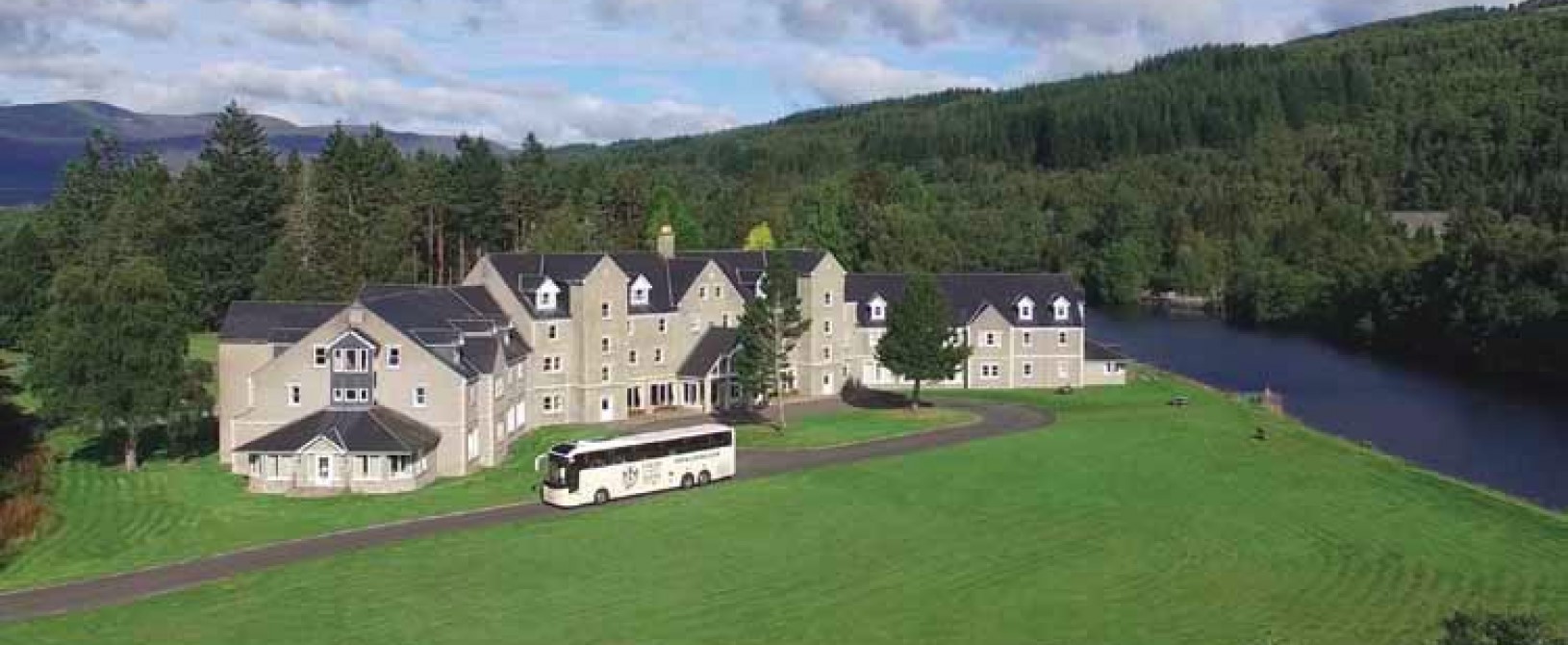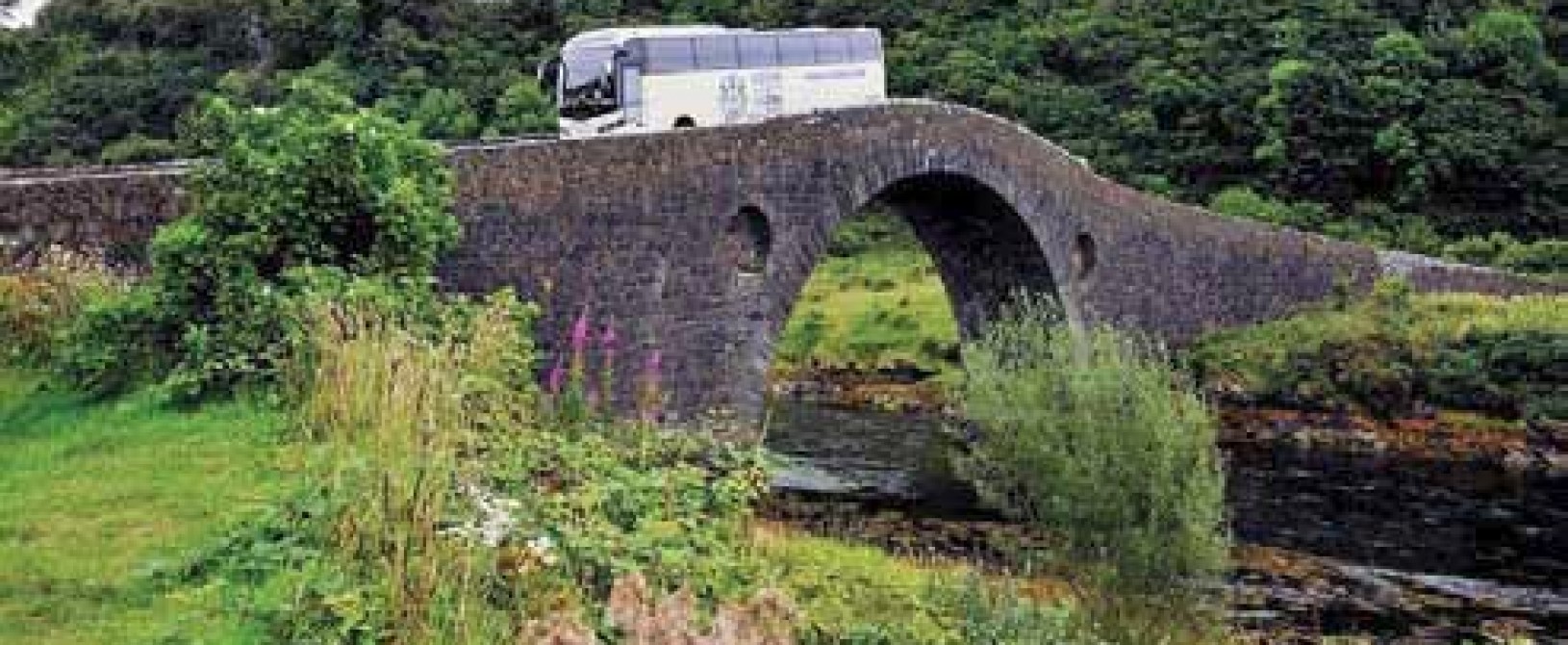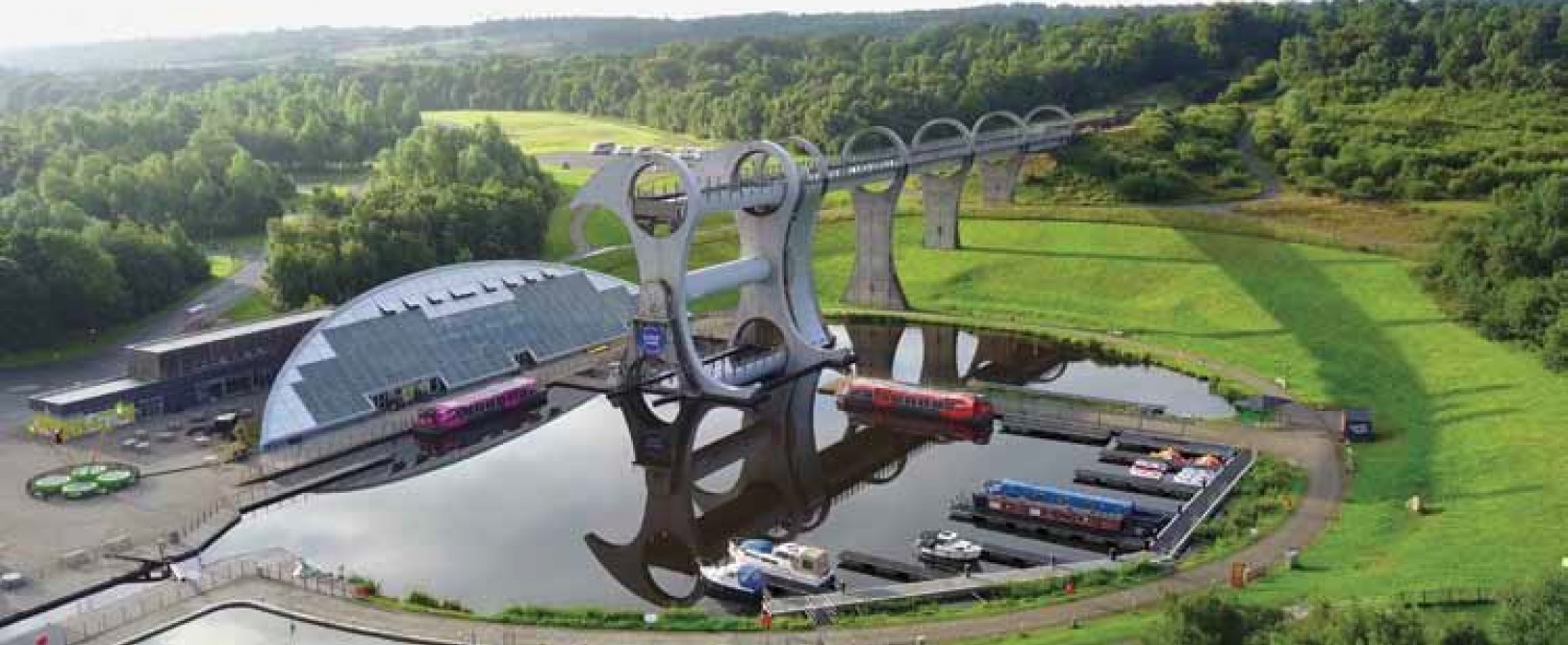Issue 48, Spring 2018

At long last we are nearing the end of our extensive programme of renovations to the Inversnaid Hotel which has taken three years and cost £4.2 million.
Since the Duke of Montrose’s hunting lodge was converted into the Inversnaid Hotel in 1820 there has been numerous additions added. The earliest photo we have was taken in 1878 and already four extensions to the original building are visible. Fast forward 140 years to the present, and the little hunting lodge has all but disappeared in the overall scale of the building.
The challenge therefore, was to tie all of these various additions into a more efficient structure and correct any shortcomings made in the past, particularly where repairs had been carried out with undue haste.
One such occasion occurred after an unlikely incident during the night of 15th May 1941. Apparently smoke from bracken burning at the back of the hotel had, from high altitude, been mistaken for the burning Clydeside docks 50 miles away. Twenty-eight bombs were dropped in the immediate area and one unfortunately, fell onto the hotel, causing considerable damage which, due to the hotel’s wartime responsibilities had to be swiftly repaired.
And so, there was a lot to think about when Neil planned the refurbishment programme. The most urgent task was to replace the entire plumbing system, and renew the water supply, any knowledge of the route of existing pipe-work having been lost in the mists of time.
Many of the original wooden lintels were replaced and all of the bedrooms and bathrooms refurbished. Sound insulation was upgraded, the kitchen renewed and the lift replaced. An epic undertaking.
In view of all of this, I am relieved to see that bookings for the current season are well ahead of last year. I hope that this is entirely because we have been doing things right, but I rather suspect that the current swirling political uncertainties may be a factor in the increasing popularity of what now seems to be known as staycations.
Michael Wells OBE, Chairman
Twenty Years Old

When we completed construction of the Loch Tummel Hotel it was, for us and for the area, an important day. It was the first time there had been a hotel in Tummel Bridge for a very long time indeed.
I know that time passes more quickly as one gets older, but it seems scarcely possible that it is 20 years since the stress and anguish suffered during the planning and construction of the Loch Tummel Hotel was replaced by a feeling of mostly relief, but a good deal of satisfaction as well.
We had been lucky to find such a wonderful site and, from the start, we were determined to build a hotel that would justify such a scenic position. After a number of enquiries it became clear that the normal procedure of using a main contractor to undertake the project would be impossibly expensive, so we decided to build it ourselves dealing directly with the various sub-contractors with the help of a project manager.
The basic design of the building started life on the back of a serviette during a memorable dinner with my two sons and was then developed into a viable building by our excellent architect, John White and his team.
Construction took about 18 months. Crucially, my son Neil lived on-site throughout the period together with our sometimes irascible but very effective construction manager, Andrew Mackay, now sadly missed.
The first major task was to build an unusually thick concrete foundation that needed 500 cubic metres of concrete in order to provide a stable base. This was necessary, as sixty years earlier, the site had been part of Loch Tummel. The ground was now made up of rock excavated during the construction of the Errochty Power Station built in the late 50’s (that’s the building just visible opposite the hotel on the far side of the river in the top photo). In fact most of the material came from the six mile tunnel from Loch Errochty that supplies the water to the two hydro-electric turbines.
As the hotel developed there were certainly arguments and disagreements and some setbacks. The worst of these involved a fire that destroyed an ancient wooden outbuilding within which we had constructed a series of mock-up bathrooms and bedrooms in order to find the ideal layout to be used as the standard throughout in the hotel.
However, despite all of the problems, we finished the project early and under budget. In a moment of elation and pride I arranged for a stone with my carved initials to be set in the wall high above the front entrance, a decision much derided by my sons.
Fifteen years on, Neil built his own, larger Magnum Opus in the form of the Ardgartan Hotel. On its completion he gave me the full tour, during which I looked in vain for a building initial stone that I had hoped to find above the entrance!
Readers' Views

The 'Bridge over the Atlantic'. Returning from Seil Island. Ron Gilbey, Hayes, Middlesex
I notice from you newsletter that many of the scenes show the Scottish landscape bathed in glorious sunshine. Unfortunately our weather can be capricious and often, without warning, puts a dampener on proceedings. I thought that the enclosed photograph would indicate that this is not always the case, for it shows my wife and friend managing to see the funny side of life while sheltering from a cloudburst during their transit of Loch Katrine. I am sure that all of your customers appreciate the hard work that you and your staff have undertaken over the years to make Lochs and Glens such a success.
- Janet and Anthony Lucas, Sutton in Ashfield, Notts
I visited the Loch Achray Hotel a little while back with the U3A group from Dereham. We all had a fantastic time and could not fault anything. I myself have been on several trips and stayed at nearly all of the hotels and they are by far the best holidays I have ever had. I took a photo on one of my walks capturing the Achray Hotel in between the horns of a gorgeous highland cow and was so pleased with it that I would love to share it with you all. I hope you enjoy the picture. Thanking you for many happy holidays spent with Lochs and Glens.
- Sheila Francis, Dereham, Norfolk
Just to say we travelled with you up to the Inversnaid Hotel in March this year. A first for all of us going to Scotland. What a place, fell in love with the sights, smells and people, Booked to come up twice next year. Different places, different hotels, cant wait!!
- Susan Smith, Southampton
Excursions

The Falkirk Wheel
A visit to the Falkirk Wheel has consistently been one of our more popular day excursions.
The Wheel is a unique rotating boat lift that connects the Forth & Clyde Canal with the Union Canal. Originally they were connected by a flight of locks constructed in 1820. In the 1930’s, commercial traffic along the canals had virtually disappeared, the locks became dilapidated and were finally dismantled in 1933.
The increase in leisure boating during the 1980’s and 90’s led to the ambitious plan to reopen the two canals, but the biggest problem was how to re-connect them. The site of the original flight of 11 locks had long since been built over and so the idea of a rotating boat lift was conceived. Costing over £17m it was a huge project. Work commenced in 1998 and over 1,000 people were employed in the construction. It was finally opened by the Queen on 24th May, 2002 as part of her Golden Jubilee celebrations.
During a visit to the Falkirk Wheel our guests have a guided tour before boarding a cruise boat which enters one of the two giant caissons for the 24 metre lift to the upper aqueduct. From there the boat continues through the Roughcastle Tunnel, excavated to avoid damaging the Roman Antonine Wall, before returning to base. The Falkirk Wheel is included in some Inversnaid Hotel itineraries.
Scone Palace
Scone Palace, the traditional crowning place of Scottish kings including Macbeth and Robert the Bruce is now one of Scotland’s leading tourist attractions and we have arranged visits there in a number of Loch Tummel Hotel itineraries.
The tour will include all of the magnificent formal rooms and galleries including the Dining Room, in which Queen Victoria and Prince Albert dined in 1842, and the magnificent library, whose shelves are home to the family’s wonderful collection of porcelain. In addition the grounds and formal gardens, are as splendid as the palace itself.
Tobermory Wild Life Cruise
New to the Lochs and Glens programme is an exciting wildlife cruise aboard the sturdy vessel, Sula-Beag that will depart from beautiful Tobermory Bay on the Isle of Mull.
After leaving the bay, the Sula-Beag will head northwest past one of the Stevenson lighthouses and into the Sound of Mull. There will be a good chance to see Sea Eagles, Golden Eagles and many other seabirds. Harbour Porpoise are often spotted on the way to the seal colony on Calve Island. The craft has toilets, a tuck shop serving tea, coffee, and a range of snacks which will be available throughout the trip. There is ample indoor and outdoor deck space including a top deck which gives a better vantage spot for viewing wildlife. Cruises will be included in some Loch Awe Itineraries.